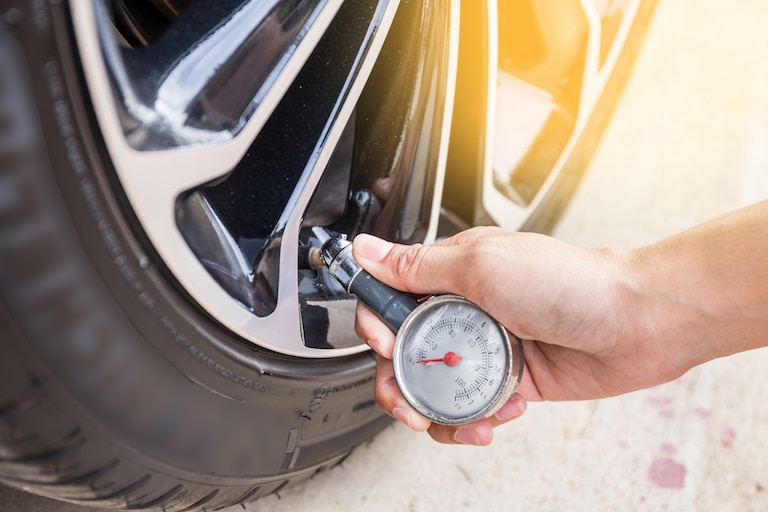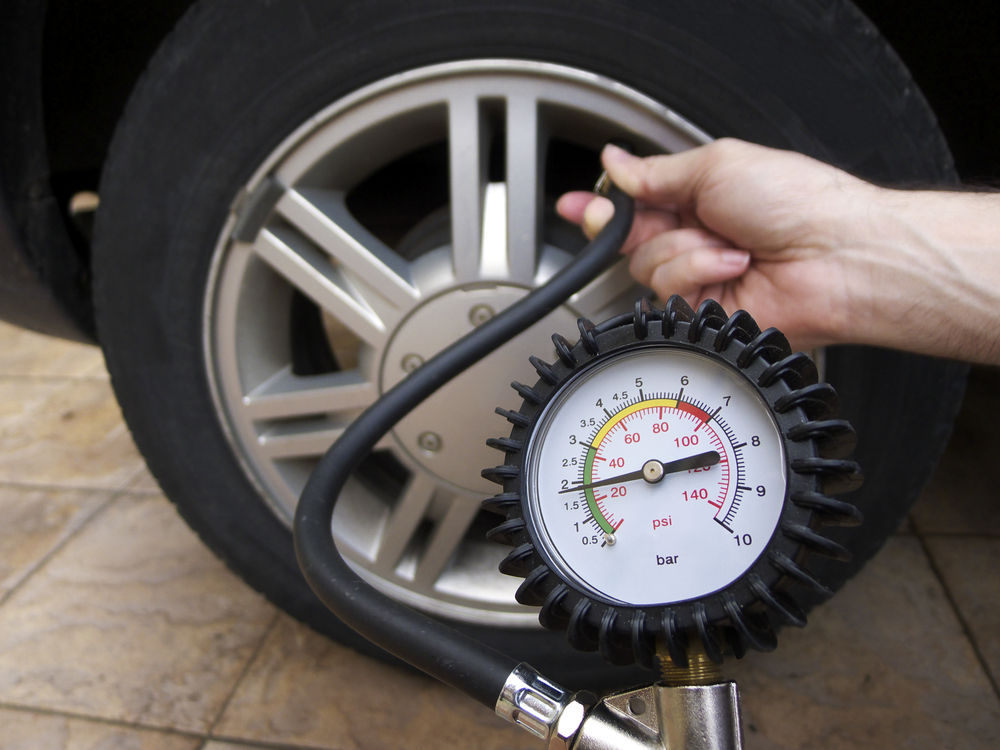Checking your car’s tire pressure is crucial for safety and efficiency. Properly inflated tires ensure better handling and fuel economy.
Many drivers ignore this simple task, but it’s easy and essential. Low tire pressure can lead to accidents and poor fuel mileage. Overinflated tires can cause uneven wear and blowouts. Regular checks keep your tires in good shape. In this guide, you will learn how to check tire pressure in your car.
We’ll walk you through the steps, tools you need, and tips for maintaining proper tire pressure. This knowledge will help you drive safer and save money. Let’s get started!
Importance Of Proper Tire Pressure
Proper tire pressure keeps you safe on the road. Overinflated tires can burst easily. Underinflated tires can cause accidents. Correct tire pressure prevents tire wear. This keeps you safe from sudden tire failures. Properly inflated tires provide better handling. This helps you control your car better. Safety is the top benefit of checking tire pressure.
Proper tire pressure improves fuel efficiency. Underinflated tires make your car use more fuel. This means you spend more money. Correct tire pressure reduces fuel consumption. This helps you save money on gas. It also helps the environment. Proper tire pressure helps your car run smoothly. This means less strain on the engine. Overall, proper tire pressure is good for your wallet and the planet.

Credit: www.bridgestonetire.com
Tools You Need
Checking tire pressure in your car requires a tire pressure gauge and an air compressor. A digital or manual gauge will work. Both tools help ensure tires are at the right pressure.
Pressure Gauge
A pressure gauge is a small tool. It measures the air in your tires. You can buy it at any auto store. The gauge is easy to use. Place it on the tire valve. It will show the pressure.
Air Compressor
An air compressor is needed to fill your tires. It adds air to the tire. You can find it at gas stations. Some people have one at home. Make sure to use the right amount of air. Too much or too little can be bad.
Finding Recommended Pressure
The owner’s manual has important details. Look for the recommended tire pressure. It is usually in PSI (pounds per square inch). This number is crucial. It helps keep your tires safe. Proper pressure also improves fuel efficiency.
A tire placard is in your car. Check the driver’s door. Sometimes it’s near the glove box. This placard shows the recommended tire pressure. It is important to follow this number. Correct tire pressure keeps your car running well. It also keeps you safe.
Credit: www.allstate.com
When To Check Tire Pressure
Regularly check tire pressure, especially before long trips. Use a tire gauge to ensure accurate readings. Proper tire pressure improves safety and fuel efficiency.
Cold Tires
Always check tire pressure when tires are cold. Tires heat up as you drive. Heat affects the reading. The best time is early morning. Or, after the car has been parked for a few hours.
Regular Intervals
Check tire pressure every month. This keeps your tires in good shape. Also, check before long trips. This ensures safety on the road. Proper pressure helps save fuel too.
Checking Pressure With A Gauge
First, find the valve cap on your tire. It is small and round. Turn the cap counterclockwise to remove it. Keep the cap in a safe place. Do not lose it. Now, the valve is ready for the gauge.
Press the gauge onto the valve stem. Make sure it fits snugly. The gauge will show a number. This is your tire pressure. Compare this number to the recommended pressure. If it’s too low, you need more air. If it’s too high, you need to let some air out. Check all four tires to be safe.
Adjusting Tire Pressure
First, remove the valve cap from the tire. Attach the air pump to the valve stem. Make sure it fits tightly. Add air by pressing the pump handle. Check the pressure with a gauge. Stop adding air when it reaches the right level. Finally, put the valve cap back on.
Press the small pin inside the valve stem. Use a tool or your fingernail. Let the air escape slowly. Check the pressure with a gauge. Stop releasing air when the pressure is correct. Put the valve cap back on. This keeps the air inside.
Rechecking And Final Steps
Double-check the tire pressure using a gauge. Ensure all tires are at the recommended levels. Secure the valve caps tightly.
Double-checking Pressure
Ensure the tire pressure gauge is accurate. Check each tire again. This confirms the pressure is correct. If the pressure is still low, add more air. Repeat the process for all tires. Proper tire pressure improves safety and fuel efficiency.
Replacing Valve Caps
Put the valve caps back on each tire. These caps keep dirt and moisture out. Tighten them by hand. Do not use tools to tighten. Properly sealing the valves helps maintain pressure. Double-check all valve caps are secure. This step protects your tires.
Tips For Maintaining Tire Health
Check your tires weekly. Look for any signs of wear or damage. Ensure the tire pressure is at the right level. Use a pressure gauge for accuracy. Keep an eye on tread depth too. Shallow treads are unsafe. Rotate tires every 5,000 miles. This helps them wear evenly. Always inspect tires before long trips. Catching problems early can save money.
Visit a tire professional twice a year. They can check alignment and balance. This ensures your car drives smoothly. Professionals can also spot hidden issues. Trust their expertise for best results. Regular servicing extends tire life. It also improves fuel efficiency. A well-maintained tire is safer and saves money.

Credit: www.floodmazda.com
Frequently Asked Questions
How Do I Know If I Need Air In My Tires?
Check your tire pressure with a gauge. Compare the reading with the recommended PSI in your vehicle’s manual. If the pressure is low, add air. Monitor for signs like uneven wear or warning lights on the dashboard. Regular checks help maintain optimal tire health.
How To Check Air In Tires At A Gas Station?
To check air in tires at a gas station, find the air pump. Remove tire cap, attach the hose, and read the gauge. Adjust air pressure as needed.
How Do I Find The Correct Tire Pressure For My Tires?
Check the driver’s side door jamb for a sticker with tire pressure details. Alternatively, refer to your vehicle’s manual.
How Many Psi Should My Car Tires Be?
Check your car’s manual or the tire placard on the driver’s door. Most tires need 30-35 psi.
Conclusion
Proper tire pressure ensures safety and fuel efficiency. Check your tires regularly. Use a reliable pressure gauge for accuracy. Know your car’s recommended pressure from the manual or door sticker. Cold tires give the best readings. Adjust pressure as needed.
Regular checks prevent tire wear and save money. Safe driving starts with well-maintained tires. So, make tire pressure checks a routine. Your car and wallet will thank you. Happy driving!

